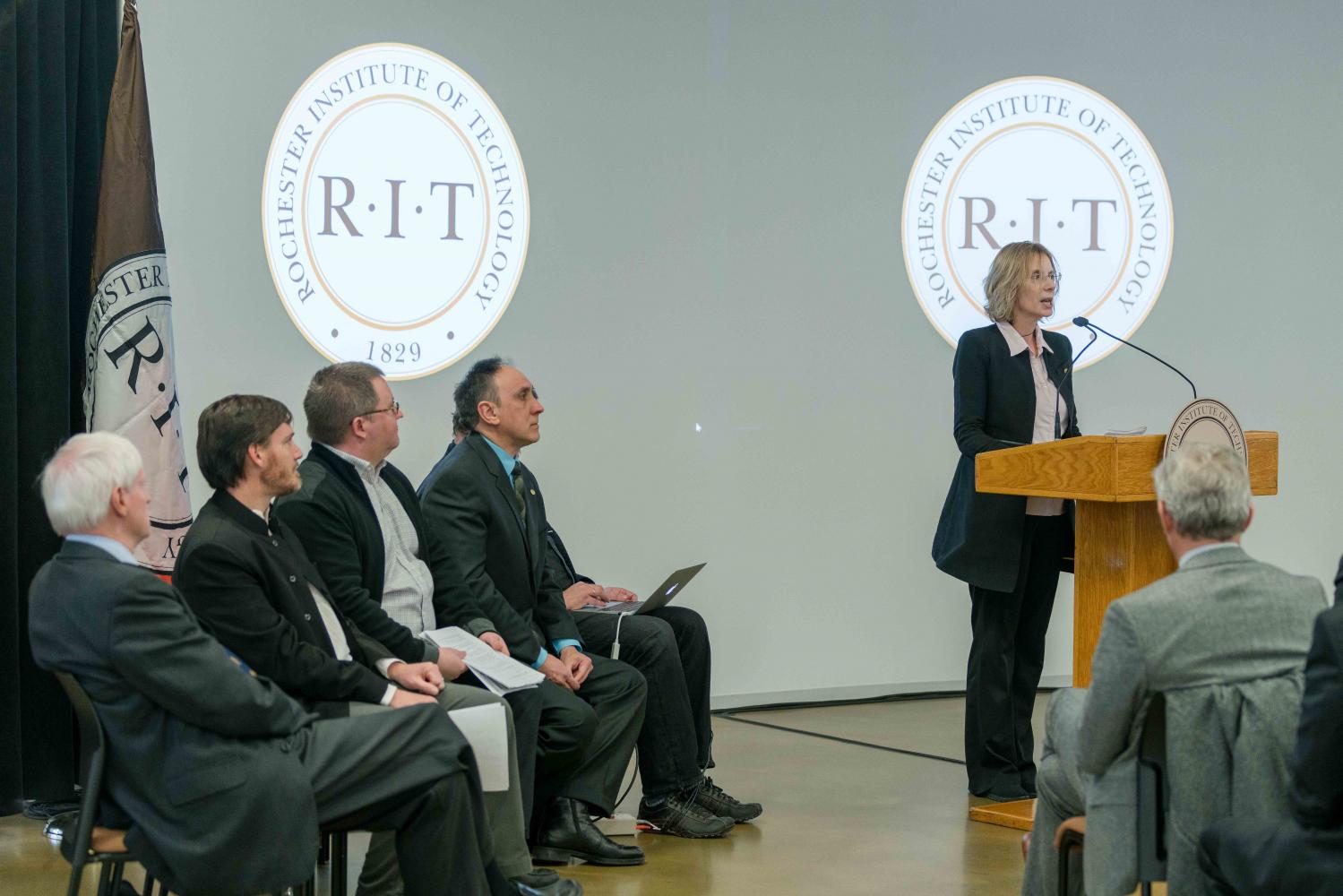On Feb. 11, a press release was held to announce something monumental.
Six RIT researchers and professors were co-authors on a paper by the LIGO Scientific Collaboration that predicted and proved a crucial part of Einstein's currently flawless general theory of relativity regarding the existence of ripples in spacetime called gravitational waves. This is one of the most, if not the single most influential astrophysical proofs of a theory in the modern age. Even more impressively, it comes a little over 100 years after Einstein began his journey into gravitational waves.
The gravitational waves detected come from distant depths of the unknown universe. Approximately 1.3 billion years ago, two black holes collided and formed one large black hole. One black hole was 36 solar masses and the other was 29; the black hole they formed was approximately 62 solar masses, the missing mass having been converted to energy.
The after effect of this collision distorted spacetime in waves that were detected by researchers at LIGO (Laser Interferometer Gravitational-Wave Observatory) as a small peak lasting about one-fifth of a second. The peak could be "heard" by LIGO's 2.5 mile long L-shaped antennas housing 2.5 million gallons of empty space, a massive vacuum, with mirrors suspended at each end, forming a "resonant cavity". Light was sent down these vacuums and back, allowing researchers to measure the difference in length of the two branches. These infinitesimally small changes, less than the size of a proton, are caused by gravitational waves.
Researchers from RIT's Center for Computational Relativity and Gravitation used Einstein's theory to simulate a binary black hole merger and the signal we would receive. Using this model, LIGO researchers knew what to look for. RIT's predictions were confirmed by the recent discovery. Many more observations of gravitational waves are expected to be announced by LIGO after they are confirmed.
Though it may not seem like such a groundbreaking discovery, this is one of the last bricks on the pathway to even more knowledge of our universe. It has opened the door to a brand new sector of astrophysics that could even surprise Einstein. With this new discovery, we will be able to conduct direct and pointed tests of all components of Einstein's theory of relativity, traverse the rocky trail through the distorted characteristics of our universe and beyond, create new fields of study in schools and universities and explore how black holes and their fusions have affected and will affect our universe. For the first time ever, we can directly observe black holes.
Check out more about LIGO's work here and be sure to visit our Center for Computational Relativity and Gravitation to learn more about our researchers and their fields!








